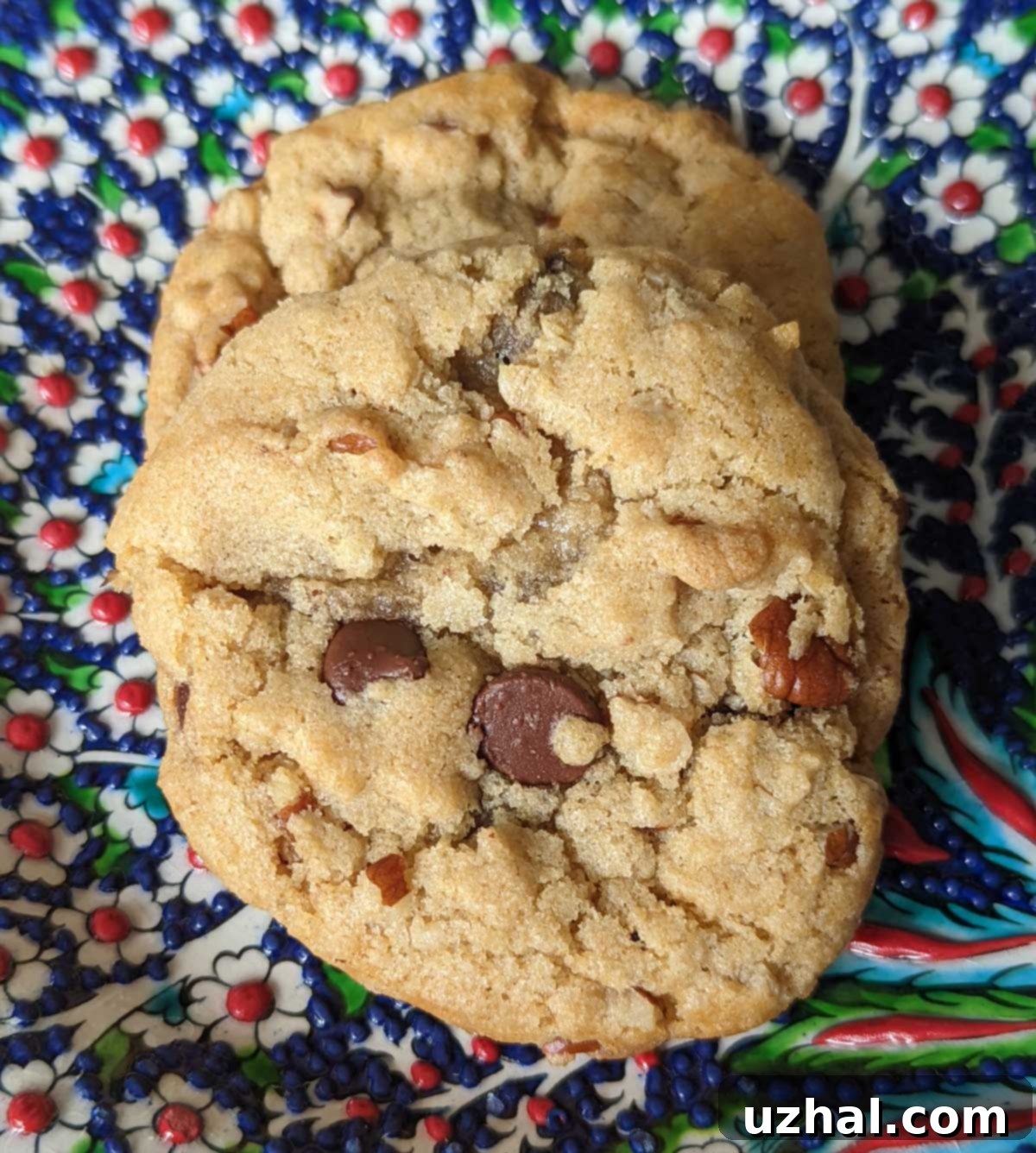The Ultimate Vegan Aquafaba Chocolate Chip Cookies: Chewy, Crispy & Gluten-Free Options
Get ready for a cookie revelation! We’ve given our famous Aquafaba Chocolate Chip Cookies a fantastic makeover, transforming them into what we proudly call “aqua-fabulous” delights. If you’ve been searching for the perfect vegan chocolate chip cookie recipe that delivers on both taste and texture, your quest ends here. These cookies are a game-changer, offering an irresistible combination of crinkly tops, delightfully chewy centers, and perfectly crispy edges – all without a single egg!
Aquafaba: The Vegan Wonder Liquid for Baking
Aquafaba, a term that might sound exotic but is surprisingly simple, refers to the liquid found in a can of chickpeas. This unassuming liquid is a true gem in the world of vegan baking and cooking, acting as an incredible egg replacer and binder. Its unique properties allow it to mimic egg whites, whipping up into stiff peaks for meringues, adding an airy fluffiness to non-dairy ice creams, and, most importantly for us, providing structure and moisture in baked goods like these chocolate chip cookies.
For a long time, I wasn’t particularly diligent about saving this magical liquid. After all, who knew the humble chickpea brine held such culinary power? But ever since perfecting this aquafaba chocolate chip cookie recipe, my habits have completely changed! Now, after draining a can of chickpeas, I carefully transfer the aquafaba into a small plastic container, ready to be transformed into a batch of delicious cookies. Trust me, once you experience how well it works, you’ll be saving every drop too – especially since “chocolate chip cookie time” is, let’s be honest, all the time!
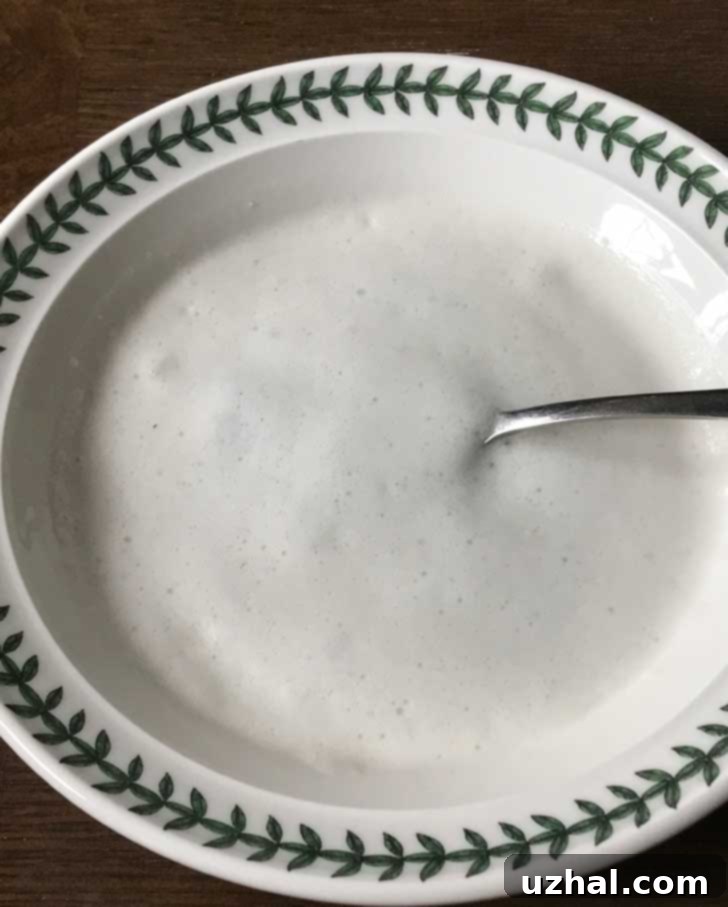
The Magic of Whipped Aquafaba in Cookies
Update: A crucial step we’ve refined for this recipe is whipping the aquafaba. While some recipes call for simply adding the liquid, we’ve found that pre-whipping it significantly enhances the texture of the cookies, contributing to that desirable chewy and crinkly finish. You’ll add 44 grams of already whipped aquafaba to the dough, and then it will be further incorporated and whipped with the vegan butter, shortening, and sugars.
The process is simple: just drain the liquid from a can of chickpeas into a mixing bowl and beat it on high speed with an electric mixer until it becomes foamy, light, and almost meringue-like in consistency. An 8 oz (small) can of chickpeas typically yields about 3 oz (84 grams) of aquafaba, while a full-size can will likely give you closer to 6 oz (around 170 grams). This means you’ll usually have plenty of leftover whipped aquafaba, which you can save in the refrigerator for another baking adventure or simply discard.
Whipping the aquafaba introduces air into the mixture, creating a lighter, more tender crumb in the final cookie. This aeration helps to replace the structural properties of eggs, ensuring your vegan cookies are not dense or crumbly but have that perfect balance of chewiness and a slight crispness around the edges. It’s a small extra step that makes a huge difference in achieving truly superior vegan chocolate chip cookies.
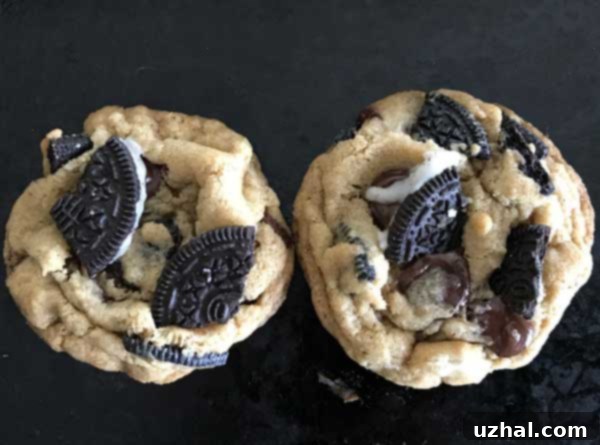
Our newly improved recipe yields cookies that are everything you could wish for: perfectly crinkly on top, wonderfully chewy in the center, and satisfyingly crispy around the edges. Flavor-wise, you absolutely won’t miss the egg. Instead, you’ll enjoy the rich, creamy notes from the vegan butter complemented by the deep, caramelized sweetness of brown sugar. These cookies stand proudly against any traditional chocolate chip cookie, offering a delightful experience for vegans and non-vegans alike.
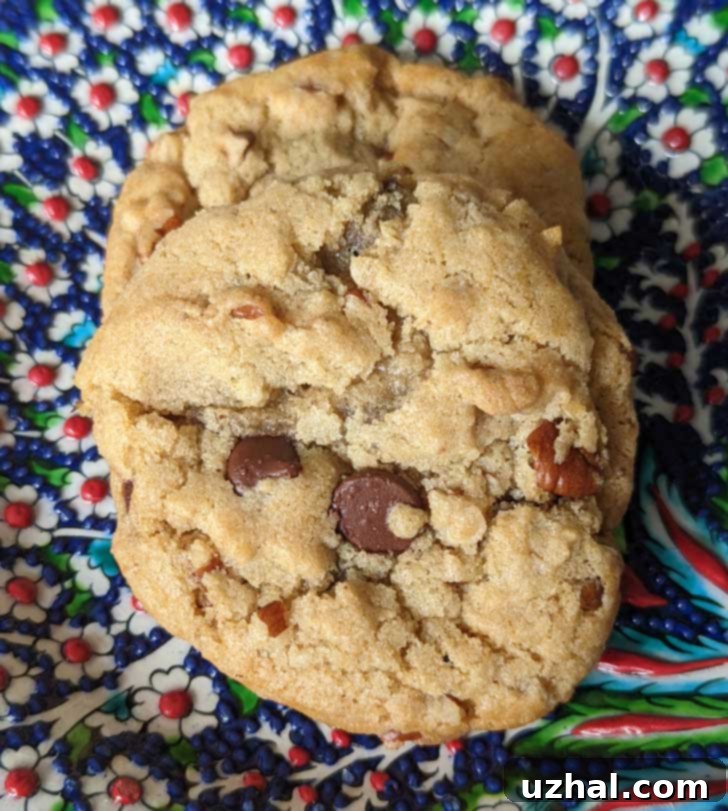
Choosing the Best Vegan Fats for Perfect Cookie Texture
The choice of vegan fats plays a crucial role in achieving the ideal texture for these aquafaba chocolate chip cookies. We aim for a cookie that’s both chewy and slightly crisp, and a combination of vegan butter and shortening helps us get there. Here’s a deeper dive into our recommendations:
Soy-Free Earth Balance Buttery Sticks: Our Top Pick
When it comes to vegan butter, the Soy-Free Earth Balance Buttery Sticks are our absolute favorite for this recipe. We find they impart a slightly better flavor profile compared to their soy-containing counterparts, offering a cleaner, richer buttery taste that truly elevates the cookies. However, if the soy-free version isn’t available, the regular Earth Balance Buttery Sticks will work perfectly fine. Don’t fret if Earth Balance is hard to find in your area; many other brands of vegan butter sticks or blocks can be used as a substitute. We’ve simply had consistent success and fantastic results with the Earth Balance sticks, which is why we highly recommend them for their reliability and flavor contribution. While the tub-style Earth Balance can also be used, especially if combined with shortening, the stick form tends to yield slightly firmer results, which is beneficial for cookie structure.
Spectrum or Other Trans Fat-Free Shortening for Crispy Edges
To achieve that coveted balance of chewy centers and wonderfully crispy edges, we strongly advocate for using a combination of vegan butter and a good quality, trans fat-free shortening. While using only vegan butter will still result in a tasty cookie, incorporating shortening provides an undeniable textural improvement. It helps create a firmer, crunchier exterior, particularly around the edges, while keeping the interior soft and pliable. Our recommended ratio is 8 tablespoons (114 grams) of vegan butter combined with 4 tablespoons (48 grams) of shortening. Brands like Spectrum are excellent choices for trans fat-free vegetable shortening, but any similar product will do the trick. This blend of fats is key to developing a cookie with complex texture that truly mimics traditional egg-based recipes.
Seamlessly Gluten-Free Aquafaba Cookies
For those seeking a gluten-free option, these aquafaba chocolate chip cookies are incredibly adaptable. As usual, King Arthur’s Measure for Measure gluten-free flour blend proves to be an outstanding performer! You can easily make these cookies gluten-free by simply substituting the equivalent weight of Measure for Measure flour for the all-purpose flour. This blend is formulated to be a direct 1:1 replacement in most recipes, ensuring consistent results without the need for complex adjustments.
While we haven’t personally tested every brand, we’re confident that other reliable 1:1 gluten-free flour blends, such as Bob’s Red Mill’s 1:1 Gluten-Free Baking Flour, would also work beautifully. The key is to look for a blend that already includes xanthan gum in its formulation. Both King Arthur Measure for Measure and Bob’s Red Mill’s 1:1 blends contain xanthan gum, which is crucial for providing structure and elasticity in gluten-free baking, preventing a crumbly texture. If you opt for a different brand, double-check its ingredient list to ensure xanthan gum is present. If it’s not, you might need to add a small amount (usually about ½ teaspoon per cup of flour) to achieve the desired chewy, cohesive texture.
Beyond the flour, remember to ensure that any chocolate chips or chunks you use are certified gluten-free, as some brands may contain cross-contamination. With these considerations, you can enjoy these delicious aquafaba chocolate chip cookies, knowing they are perfectly safe and satisfying for a gluten-free diet.
Customizing Your Aquafaba Chocolate Chip Cookies
While the classic chocolate chip is undeniably delicious, these aquafaba cookies serve as a fantastic base for endless customization. Don’t hesitate to get creative with your add-ins and flavor profiles! Here are a few ideas to inspire you:
- Chocolate Variety: Instead of just semisweet, try a mix of dark chocolate chunks, milk-style vegan chocolate chips, or even white chocolate chips for a different flavor dynamic.
- Nutty Additions: Beyond walnuts, consider pecans, almonds, or even a mix of your favorite nuts for added crunch and richness. Toasting them lightly beforehand can enhance their flavor.
- Dried Fruits: For a touch of fruity sweetness and chewiness, incorporate dried cranberries, cherries, or even finely chopped apricots.
- Spices: A pinch of cinnamon, nutmeg, or even a dash of cayenne pepper (for a hint of warmth with chocolate) can add an interesting depth of flavor.
- Extracts: Experiment with almond extract, peppermint extract, or orange zest to complement the chocolate and vanilla.
- Pretzel Pieces: For a salty-sweet crunch, crush some vegan pretzels and fold them into the dough.
- Oreo Chunks: As shown in one of our photos, crushing vegan-friendly Oreo cookies and mixing them in (or pressing them onto warm cookies) adds a fun twist and extra texture.
Remember to adjust the total amount of add-ins so as not to overwhelm the dough. Generally, 1 to 1.5 cups of total add-ins works well for this recipe. Have fun experimenting and make these cookies truly your own!
Baking Tips for Perfect Aquafaba Cookies Every Time
Achieving cookie perfection often comes down to a few key baking techniques. Here are some tips to ensure your aquafaba chocolate chip cookies turn out beautifully:
- Chilling the Dough: While you can bake these cookies right away, chilling the dough for at least an hour (or even overnight) significantly improves their flavor and texture. Chilled dough spreads less, resulting in thicker, chewier cookies with more defined edges. It also allows the flavors to meld beautifully.
- Don’t Overmix: After adding the flour mixture, mix just until combined. Overmixing can develop the gluten (even in gluten-free flours if they contain gum), leading to tougher cookies.
- Scoop Consistency: Using a cookie scoop ensures that all your cookies are uniform in size, which leads to even baking. This recipe yields 28 cookies with a medium scoop.
- Parchment Paper is Your Friend: Always line your baking sheets with parchment paper or a silicone baking mat. This prevents sticking, promotes even browning, and makes cleanup a breeze.
- Space Them Out: Give your cookie dough balls ample space (about 3 inches apart) on the baking sheet to allow for spreading without merging into one giant cookie.
- Watch for Doneness: These cookies are best when slightly underbaked in the center. Bake for 10-12 minutes, or until the edges are golden brown but the centers still look slightly soft. They will continue to set as they cool. Overbaking will result in drier, crispier cookies.
- The Spatula Trick: If your cookies spread a bit too much, gently push the edges inward with the inverted tip of a spatula immediately after they come out of the oven. This helps reshape them into perfectly round discs.
Storage and Enjoyment
Once cooled, these aquafaba chocolate chip cookies can be stored in an airtight container at room temperature for up to 3-4 days. For longer storage, you can freeze the baked cookies for up to 2-3 months. Simply thaw them at room temperature or gently warm them in the oven for a few minutes for that freshly baked taste.
The cookie dough itself can also be frozen! Scoop the dough into balls and arrange them on a baking sheet. Freeze until solid, then transfer the frozen dough balls to a freezer-safe bag or container. When a cookie craving strikes, simply bake them from frozen, adding a couple of extra minutes to the baking time. This is a fantastic way to always have warm, homemade vegan chocolate chip cookies on hand!
- Vegan Oatmeal Chocolate Chip Cookies
- Easy Aquafaba Chocolate Pumpkin Muffins
- Earth Balance Coconut Spread Coconut Cupcakes
- Vegan Double Chocolate Muffins
- Soy Sauce Chocolate Chip Cookies
Recipe
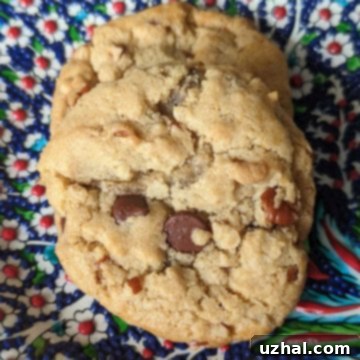
Aquafaba Chocolate Chip Cookies
Anna
Pin Recipe
Ingredients
- 8 tablespoons vegan butter (Earth Balance Soy Free Sticks or tub) or any brand (114 grams)
- 4 tablespoons Spectrum shortening (or any trans fat-free shortening) (48 grams)
- ½ cup granulated sugar (100 grams)
- ¾ cup brown sugar (150 grams)
- 1 ½ teaspoons vanilla extract
- 44 grams of whipped aquafaba (see note on whipping)
- 2 cups unbleached all-purpose flour or the equivalent amount of gluten-free 1:1 flour (such as King Arthur Measure for Measure) (260 grams)
- ¼ teaspoon salt See note
- 1 teaspoon baking soda
- ½ teaspoon baking powder
- ½ teaspoon cream of tartar
- ¼ cup oats, old fashioned or quick (optional)
- ⅓ cup walnuts, coarsely chopped (optional)
- 1 cup semisweet or bittersweet chocolate chips more if desired
Instructions
-
In a large mixing bowl, using an electric mixer, beat the softened vegan butter, shortening, granulated sugar, brown sugar, and vanilla extract until the mixture is light and creamy. Carefully beat in the pre-whipped aquafaba until thoroughly combined.
-
In a separate medium bowl, whisk together the flour (or gluten-free 1:1 flour), salt, baking soda, baking powder, and cream of tartar until well combined.
-
Gradually add the dry flour mixture to the wet batter, mixing on low speed until just incorporated and no dry streaks remain. Be careful not to overmix. Finally, gently stir in the optional oats, walnuts, and chocolate chips until evenly distributed throughout the dough.
-
Using a medium-sized cookie scoop (about 1.5 tablespoons), portion the dough into 28 balls. You can leave them as scoops or gently roll them smooth. Cover the dough balls and chill them in the refrigerator for at least 1 hour, or preferably overnight, to allow the flavors to develop and prevent excessive spreading. Alternatively, if you’re in a hurry, you can bake them right away.
-
Preheat your oven to 350 degrees F (175 degrees C). Arrange the chilled cookie dough pieces on a baking sheet lined with parchment paper or foil, ensuring they are spaced about 3 inches apart. Bake for 10-12 minutes, or until the edges are golden brown and set, but the centers still look slightly soft and underbaked. Remember, these cookies are often better slightly underbaked than overbaked!
-
Optional step for extra indulgence: As soon as the cookies come out of the oven, if desired, press reserved vegan Oreo pieces (crème side down) onto the hot cookies. The residual heat will help them adhere. If the cookies have spread more than you’d like during baking, gently push their edges inward with the inverted tip of a spatula to reshape them into perfect rounds.
-
Allow the cookies to cool on the baking sheet for a few minutes until they are firm enough to transfer to a wire rack to cool completely. Enjoy!
Notes
Aquafaba: To whip aquafaba, simply open a can of chickpeas and drain the liquid into a clean mixing bowl. Using an electric mixer (handheld or stand mixer), beat on high speed until the aquafaba becomes foamy, light, and achieves a consistency similar to soft-peak meringue. It should hold its shape somewhat. Scrape the whipped aquafaba into a separate small bowl. When ready to use in the recipe, weigh out 44 grams. Any leftover whipped aquafaba can be stored in an airtight container in the refrigerator for up to 3 days for other baking projects, or you can discard it.
Gluten-Free Option: If using a gluten-free 1:1 flour blend, ensure it contains xanthan gum for best results. If your blend does not contain xanthan gum, add ½ teaspoon of xanthan gum along with the dry ingredients.
Chilling Dough: While optional, chilling the dough for at least an hour helps prevent spreading and results in a chewier, more flavorful cookie. For best results, chill for 4-24 hours.
Frequently Asked Questions (FAQs) About Aquafaba Cookies
- Will my cookies taste like chickpeas if I use aquafaba?
- Absolutely not! Aquafaba is incredibly neutral in flavor. Once baked, the chickpea taste completely disappears, allowing the delicious flavors of chocolate, vanilla, and brown sugar to shine through. You won’t even know it’s there!
- Can I use aquafaba straight from the can, without whipping it?
- While some simpler recipes might call for unwhipped aquafaba, for these particular cookies, we highly recommend whipping it. Whipping incorporates air, which contributes to the cookies’ light, chewy texture and helps create those desirable crinkly tops, mimicking the effect of egg whites. It’s a small extra step that makes a significant difference.
- How long can I store leftover aquafaba?
- Unwhipped aquafaba can be stored in an airtight container in the refrigerator for up to 5-7 days. Whipped aquafaba is best used within 2-3 days. You can also freeze aquafaba in ice cube trays for longer storage; once frozen, transfer the cubes to a freezer-safe bag.
- Can I substitute other egg replacers for aquafaba in this recipe?
- This recipe is specifically formulated to work with aquafaba due to its unique binding and aerating properties. Other egg replacers like flax eggs or chia eggs might yield a different texture (often denser) and are not recommended as a direct substitute for aquafaba in this particular recipe.
- My cookies spread too much. What went wrong?
- Several factors can cause cookies to spread excessively:
- Warm Dough: Ensure your dough is well-chilled before baking. Warm dough will spread rapidly in the oven.
- Too Much Fat: Double-check your measurements for vegan butter and shortening.
- Oven Temperature: An oven that’s not hot enough can also cause spreading. Use an oven thermometer to verify accuracy.
- Lack of Xanthan Gum (for GF): If using gluten-free flour, ensure it contains xanthan gum or add it separately.
